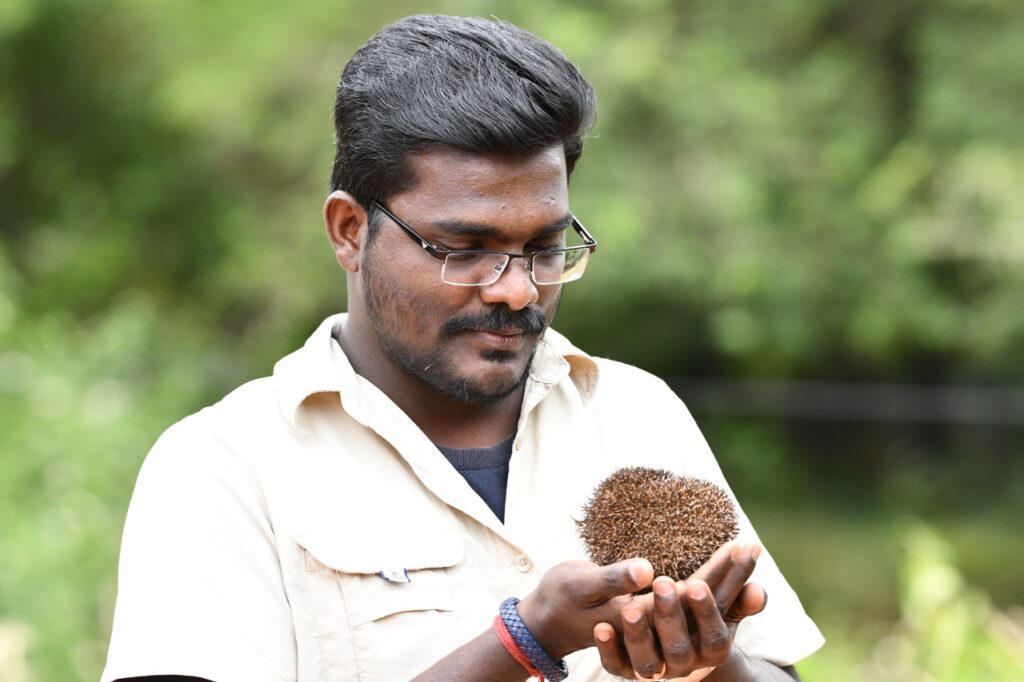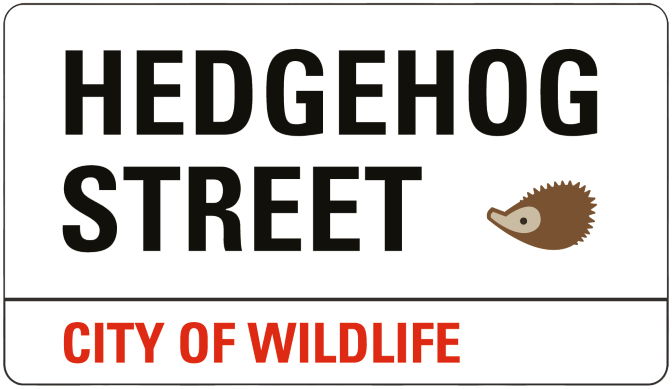Conserving the Madras Hedgehog
2nd August 2023
Three of the world’s 17 hedgehog species can be found in India. One of these is the Madras Hedgehog, a relative of our west European hedgehog that has also sadly declined as a result of factors such as habitat loss and roadkill. One local conservationist, Dr Brawin Kumar, has made it his mission to turn the tide for the Madras Hedgehog…
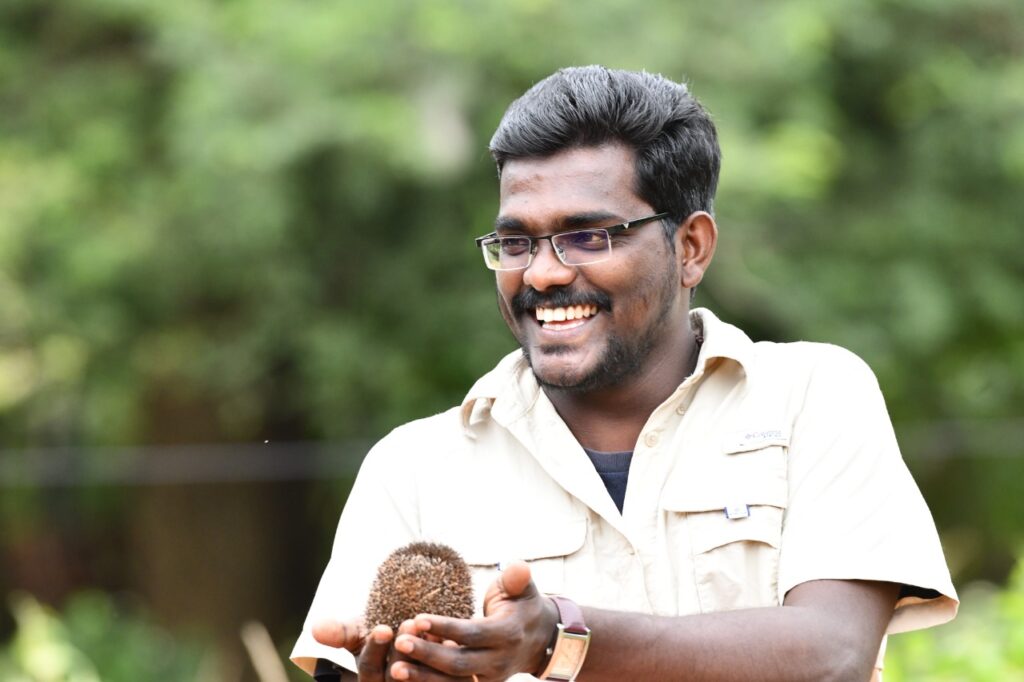
Ecology
The Madras Hedgehog (Paraechinus nudiventris), also known as the bare-bellied hedgehog, is native to southern India. At a glance, it resembles our British hedgehog with its size and colouration, but on closer inspection its prominent ears and lighter face separate it from its west European counterpart.
Similarities with its European cousin include its solitary nature and nocturnal biology. Rather than hibernating in the winter however, the Madras Hedgehog aestivates in summer to conserve energy.
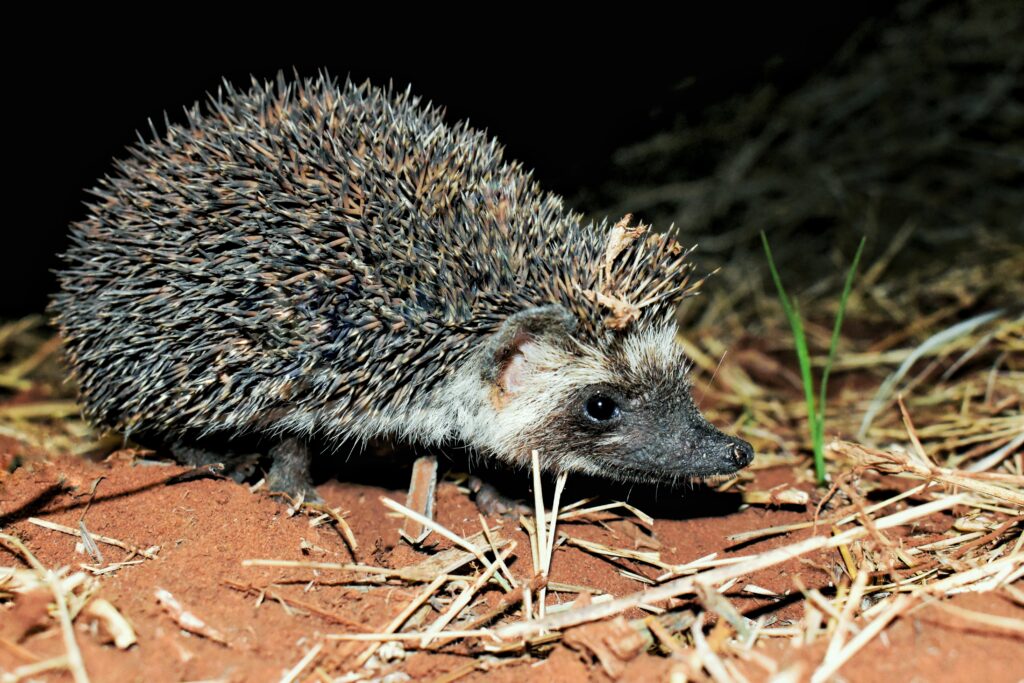
Threats
Known locally as the ‘thorny rat’, the Madras Hedgehog is under threat from the illegal pet trade. The species is also hunted for food and even medicine, as some believe the hedgehog’s spines have healing properties.
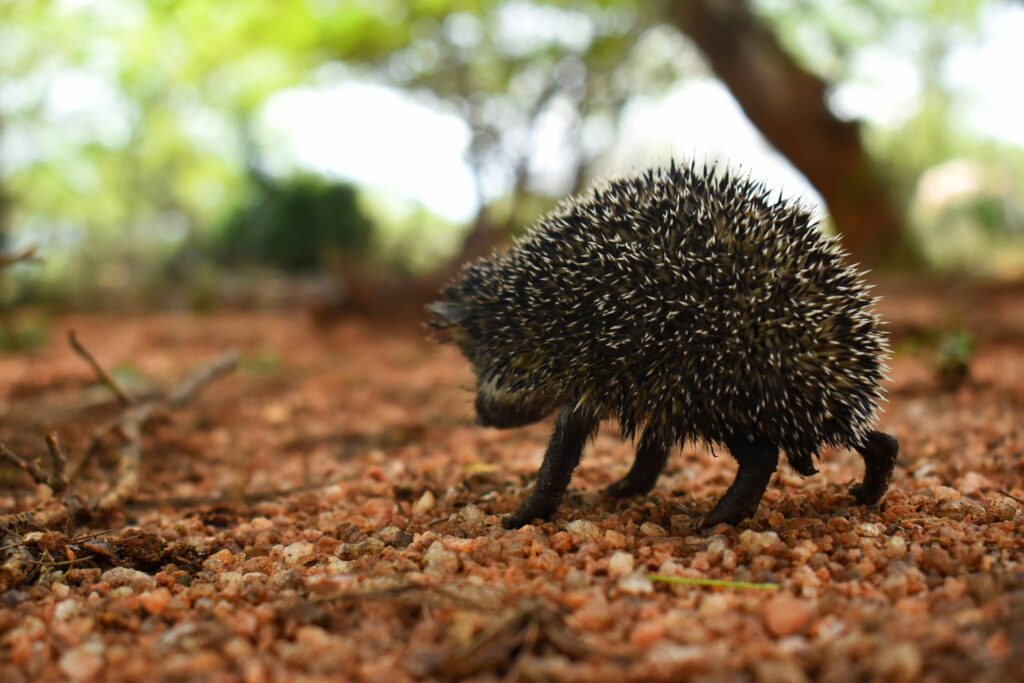
Road mortality
Much like British hedgehogs, a key threat facing the Madras Hedgehog is roadkill. Hedgehogs use the exposed, warm surface of roads to bask and increase their body temperature. This unfortunately leads to high levels of road mortality.
Grassland habitat
The Indian government considers the semi-arid savannah and grasslands as wasteland. Often overlooked or misunderstood, grasslands are in fact invaluable ecosystems that play a crucial role in the ecological balance of the region. These open expanses are adorned with a mosaic of grasses, herbs, and wildflowers. The habitat is teeming with life and offers a sanctuary for numerous plant and animal species, many of which are critically endangered. 90% of the Madras Hedgehog’s population is in these plains.
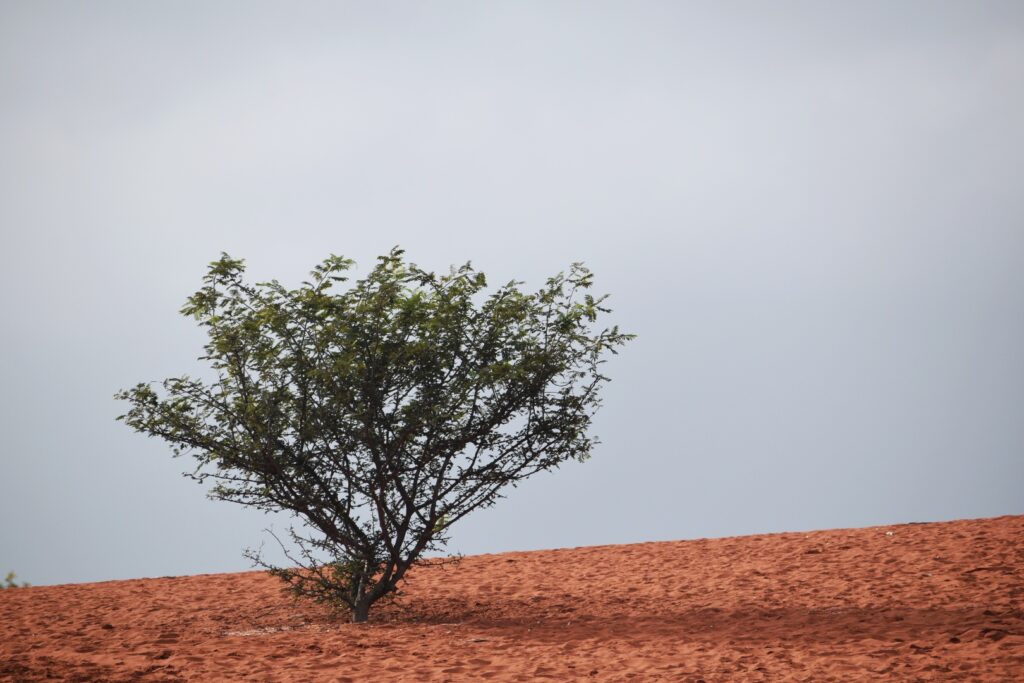
Moreover, these grasslands contribute significantly to the livelihoods of local communities. They support traditional grazing practices, providing sustenance for livestock and livelihoods for pastoralists. The rich biodiversity of grasslands also offers a potential treasure trove of medicinal plants and other valuable resources that have been used for generations by indigenous communities.
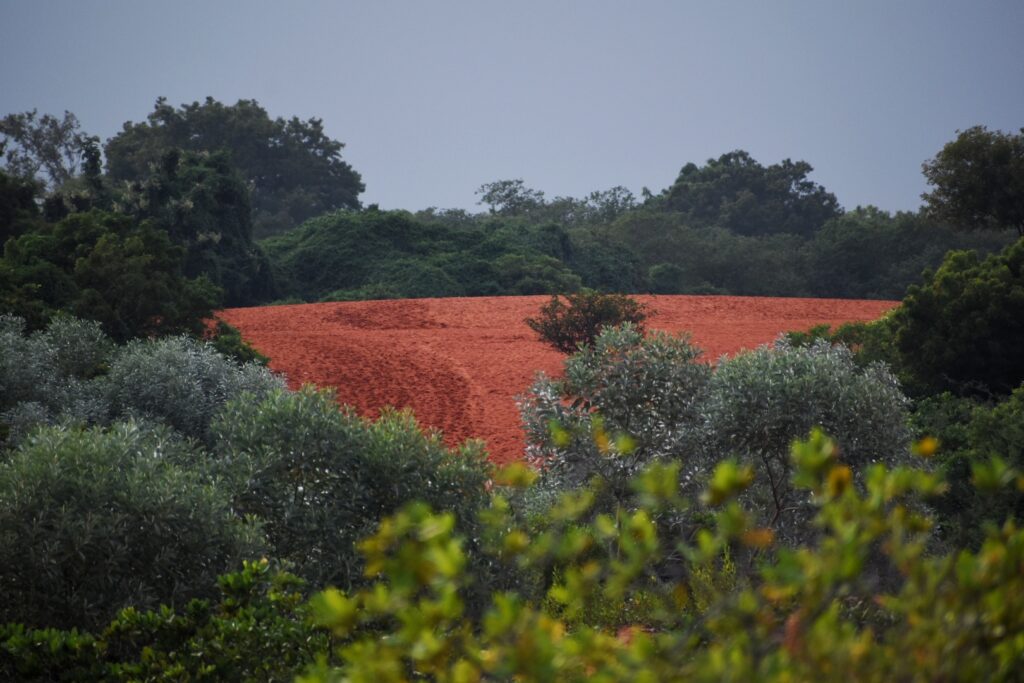
The misconception that grasslands are unproductive or expendable has led to their degradation and conversion into alternative land uses. This not only jeopardises the unique flora and fauna that call these grasslands home but also disrupts the livelihoods of those who depend on them.
Legal protection
As a result of these threats, the Madras Hedgehog has suffered local extinctions across 32 areas of Tamil Nadu. A once common species has sadly seen drastic declines in recent decades. Due to a lack of data, the species didn’t have any legal protection in India until recently. It is also currently listed as ‘least concern’ on the IUCN red list.
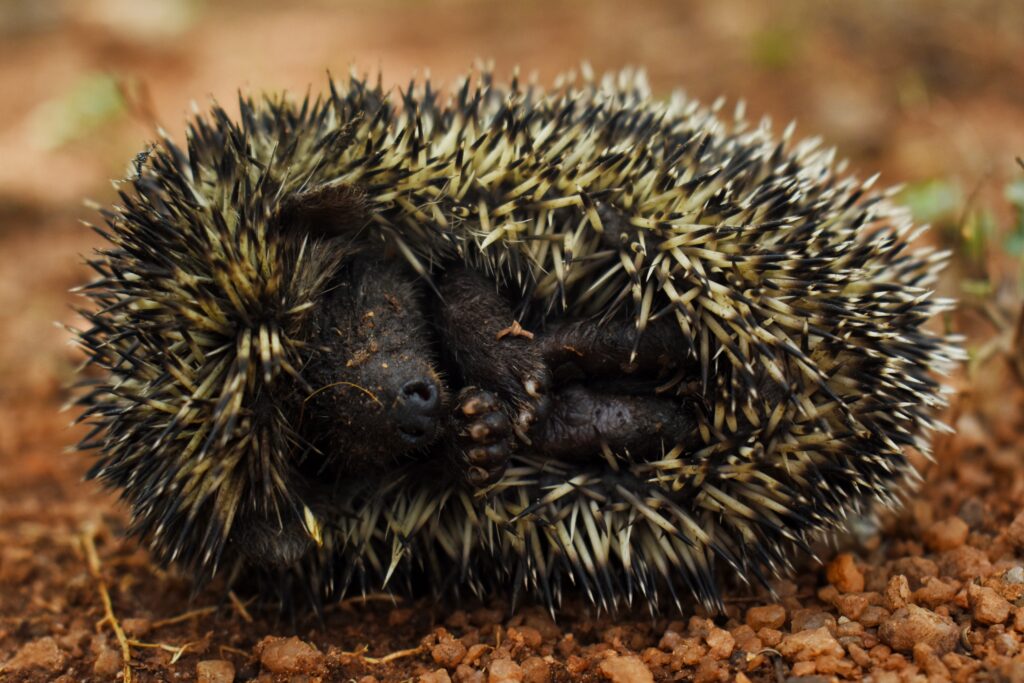
Conservation
A chance encounter
In 2013 Dr Brawin Kumar was asked about the ‘thorny rat’ by locals. The species fascinated him, and having previously worked with other small mammals in the region, he set to work discovering more about the Madras Hedgehog. Through field surveys and conversations with locals, Brawin began to understand the species’ distribution and key threats.
It became clear that the distribution ranges of the Madras Hedgehog have experienced a decline in many districts. Brawin’s efforts are therefore aimed at working collectively to restore the species and the degraded lands, thus supporting the Madras Hedgehog and similar species in the region.
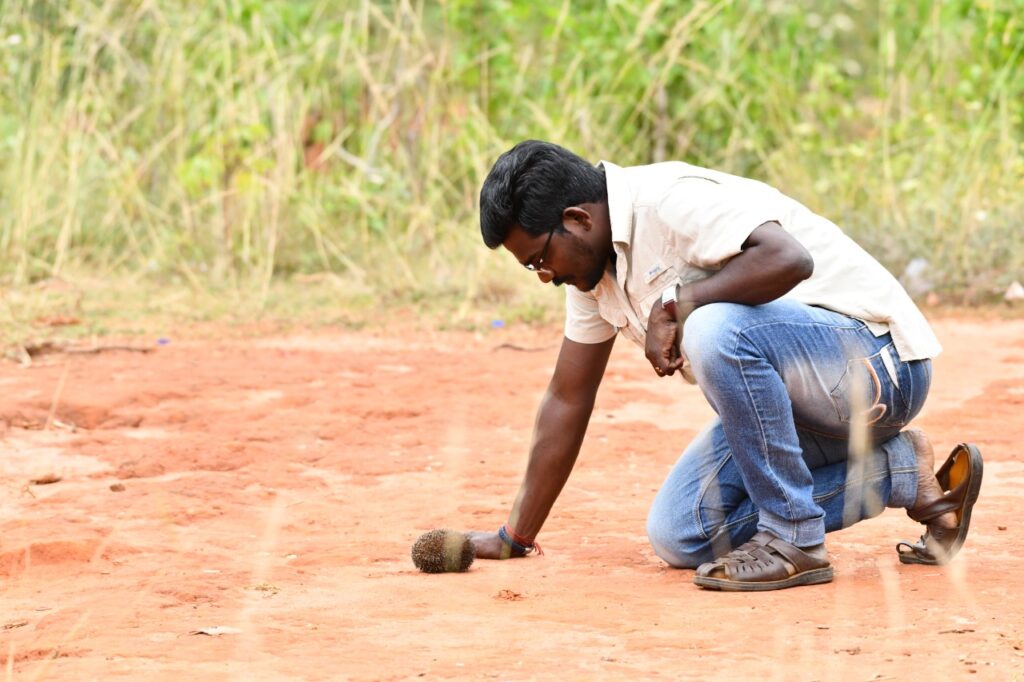
The next generation
In order to change attitudes around the Madras Hedgehog and combat superstitions, Brawin has been working with local children. In recent years he has run awareness programmes in over 100 schools across areas where the species is known to be present. Brawin uses puppet shows (pictured below) and comic books to share vital information with young audiences in a fun and engaging way.
“In the comic book, two schoolchildren rescue a little hedgehog from an unlicensed, misinformed practitioner of medicine. Most of its siblings have already ended up as roadkill and the mother is delighted to be reunited with her little one.”
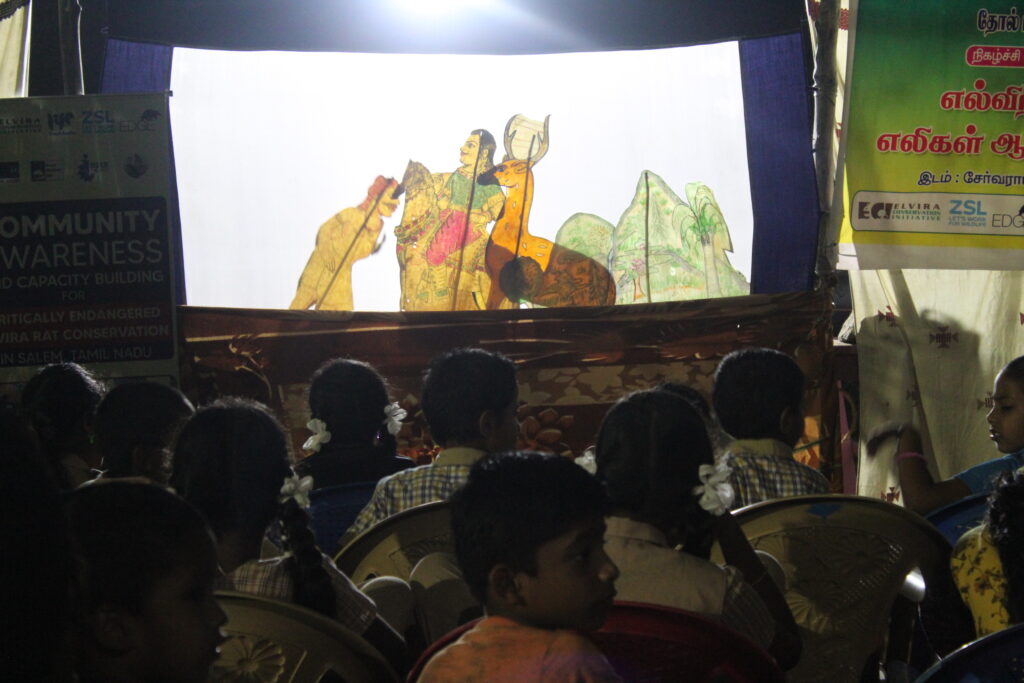
Changing minds
Brawin’s work to raise awareness and change attitudes also extends to local communities. Through conversations and engaging with people, he warns of the dangers of insecticides. He also highlights that as an insectivore, the Madras Hedgehog is in fact a farmer’s friend.
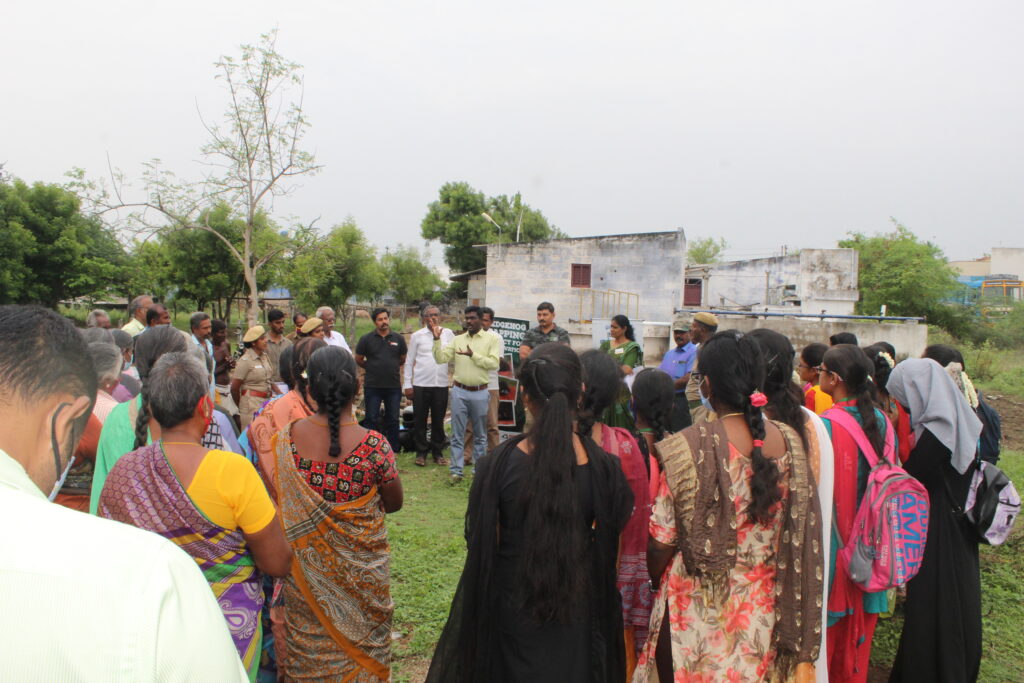
Addressing habitat issues
Grassland conservation requires a multi-faceted approach involving scientific research, community engagement and policy support. Efforts focus on raising awareness about the ecological significance of grasslands and dispelling the notion that they are wastelands. Community-based initiatives can play a pivotal role in ensuring the sustainable management of these ecosystems. This means involving local residents as stewards of their land.
“The grasslands are far from being wasteland; they are intricate and essential components of Tamil Nadu’s natural heritage. Their preservation is not only a responsibility we owe to the diverse flora and fauna that inhabit them but also to the communities that depend on their resources.”
Dr Brawin Kumar
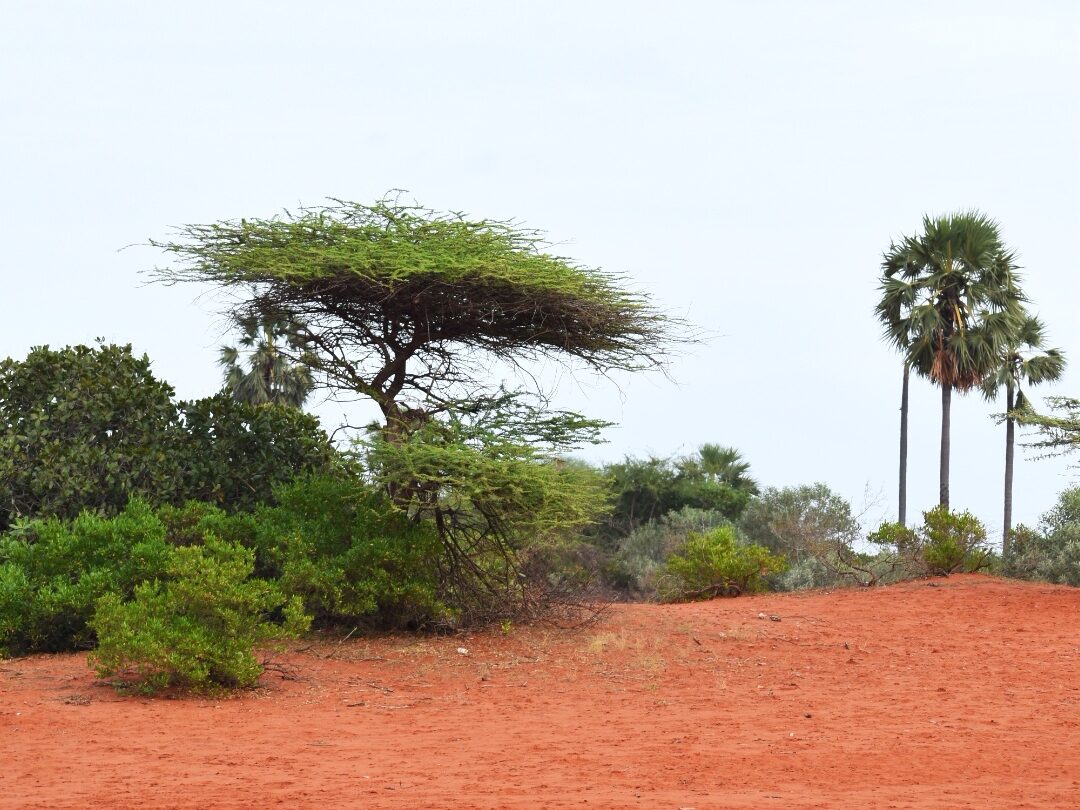
Turning the tide
As a result of Brawin and his team’s efforts, he reports that thankfully attitudes are beginning to change. From his team’s surveys, local sightings and social media, the Madras Hedgehog has been mapped in 400 places across 23 districts of Tamil Nadu.
In recent years the government has added the Madras Hedgehog to Schedule II in the Indian Wildlife Protection Act (Revised 2022). This means they are afforded high protection, with trade and hunting prohibited.
Following his work on the Madras Hedgehog, Brawin’s goal is to create a conservation action plan for small mammals in the region.
“People are of the opinion that larger animals are more important than smaller ones. Both are important for the environment; they are all dependent on each other. Hedgehogs play a vital role in the food chain.”
Dr Brawin Kumar
Find out more about Dr Kumar’s brilliant conservation work in this video from Eco India.
